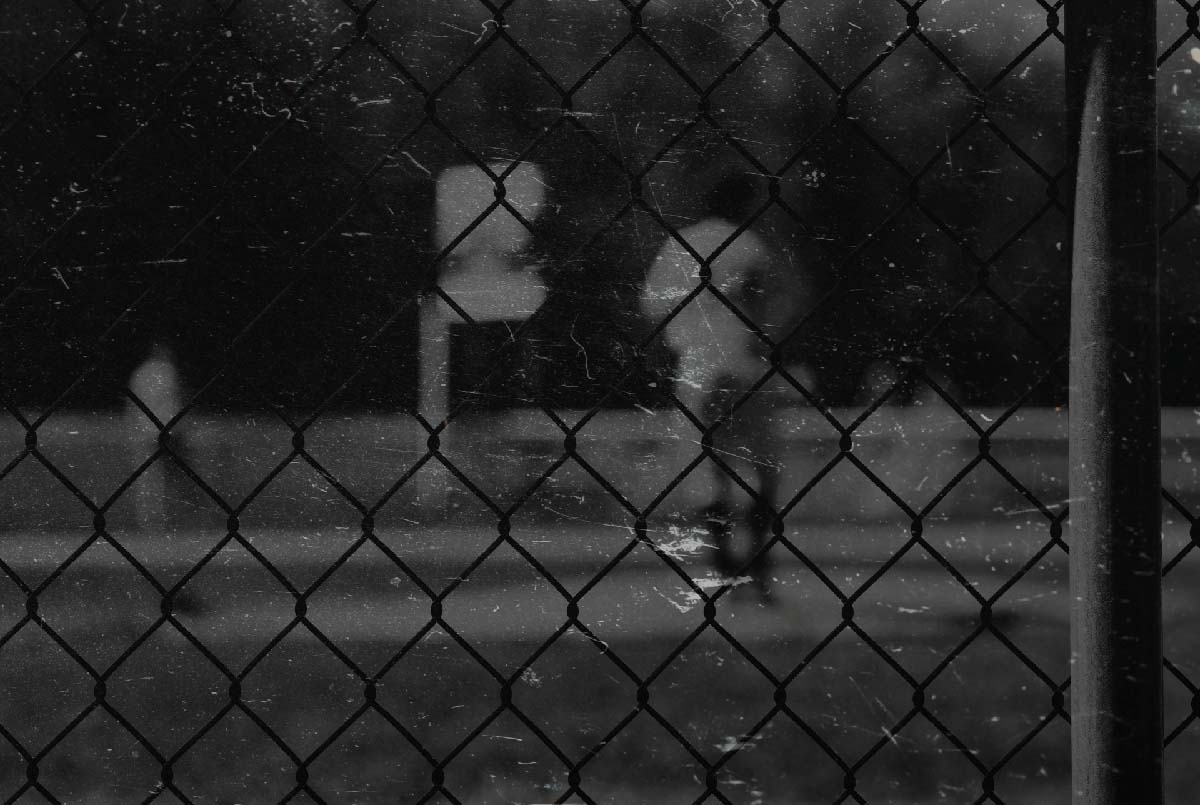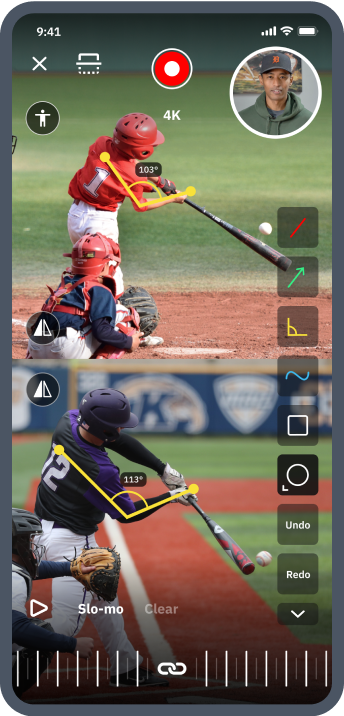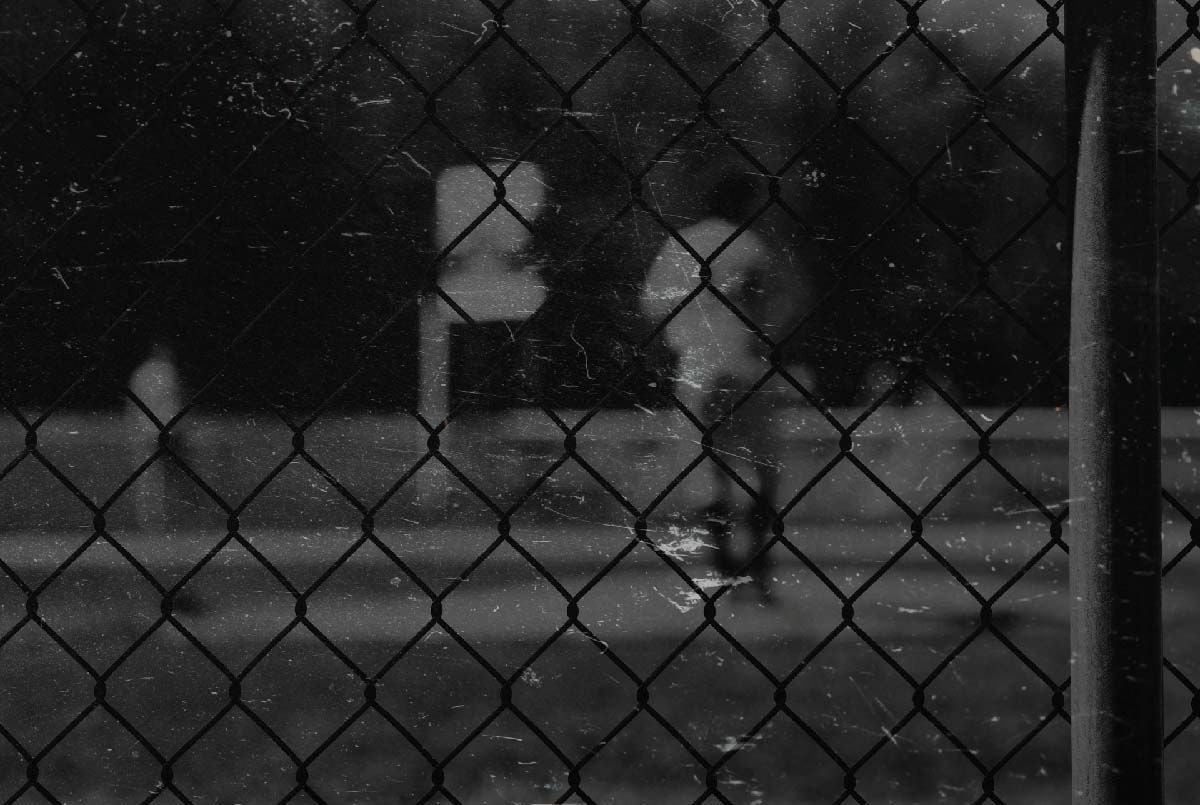The Pros & Cons of Wristbands in College Softball and Beyond

Here’s a familiar scene at both youth and college softball games these days:
A coach calls out a series of numbers from the dugout, then the entire defense looks down momentarily at the wristbands on their arms.
Many softball teams across the country now use this system for calling plays. And proponents herald its success at reducing miscommunication on the field.
But despite the wristband’s popularity in softball, opinions on them remain divided.
The use of wristbands in college softball and beyond has its pros and cons, most of which depend on how and why it's implemented.
In this article, you’ll learn:
- How softball wristbands work
- Where to find wristband templates
- The benefits of wristbands
- The downsides of wristbands
How Do You Use Softball Wristbands?
Giving softball players signs via wristbands is pretty straightforward.
Each player wears a wristband on their forearm, which has a clear pocket to slide a printed card into.
The card contains codes of letters and numbers which correspond to various plays or pitches.
Coaches call out the appropriate code, the player glances at their wristband and then executes the corresponding play or pitch.
Devising a signal system from scratch can be challenging for coaches who already have so much on their plates though.
Luckily, there are some ready-made templates out there that we’ll explore in a bit.
What is on softball wristbands?
As we mentioned, the cards placed inside the wristbands typically have a series of numbers. These numbers and their combinations correspond to plays, defensive set-ups, or pitches.
The most common format is a grid, with numbers running along the top and down the side.
Coaches will call out a number combination of the x and y axis, which players will find on the grid. Many coaches will also assign plays to more than one number combination.

Can you sign pitches with wristbands?
Wristband signs have been especially pertinent for calling pitches.
Instead of the pitcher watching the catcher’s hand for the sign, which the catcher chooses herself or relays from a coach, the coach can now call out a number code.
Both the pitcher and catcher hear it and know which pitch to deliver or expect.
Wristbands have become so common that the National Fastpitch Coaches Association (NFCA) adopted a rule change at their 2016 National Convention.
Before, pitchers had to take their wristband signal while still standing behind the rubber. After the new rule in 2017, pitchers now have a two-second pause once they step on the mound to deliver the pitch.

Where Do You Find Printable Wristband Templates?
If you don’t know what you’re doing, devising a wrist guard signal system can be complex.
You have to assign numbers that are easy to remember and make your grid simple for your players to understand.
So if you don’t want to make your own wristband card, you can find one or even pay for one that’s ready to go.
Some coaches who’ve created their own systems have put their wristband cards online for free, as pdf’s or excel templates. These are a quick Google search away.
Such free systems can be great if you’re on a budget, but they’ll only be effective if you adapt and individualize them to your team’s unique needs.
Another option is paying for software that generates and allows you to edit wrist guard systems. You can expect to pay between $150 - $300 for wristband signal software.
If your team plays at recruitable travel ball or collegiate levels and you have intricate offensive, defensive, and pitching signals, then such software could be a good investment.
The two most popular are Never Miss a Sign and Own the Zone Sports.

The Benefits of Giving Softball Offensive Signs Using Numbers
The biggest benefit of wristband signals is giving quicker and clearer signs.
Baserunners, for example, are less able to complain that they missed the sign or got confused when using wristbands.
We polled a few youth softball coaches to get a feel for what our community thinks about wristbands.
One coach we polled switched to a wristband system after his team missed too many signs and said “It sped up the game for us. If you set the card up correctly, it can be very quick and easy to find.”
Another benefit is disguising your signs more thoroughly from the other team.
Hand signals, if observed enough, can be found out.
Picking signs is most common when the same recreation ball or travel ball coaches compete against each other year after.
Firstly, coaches on the opposing team are most likely to notice pitch and play hand signal patterns after you’ve played them ten times.
But also, some of your current players may not be on your team next season, so coaches must update their hand signals regularly to avoid former players using them to their advantage.
Assigning numbers to plays – and more than one number per play – is much less detectable than hand signals.
Another coach informally polled agreed that wristband systems are “harder to pick up from opposing teams.”
Also, wristband systems are faster and easier to tweak and reprint if needed when, for example, you lose a player to a rival travel ball team.
Of course, the benefits of wrist guard systems only come if the team uses them appropriately.
As stated, wristbands are a logical option for elite travel ball or college teams with complex plays and numerous pitch-type capabilities per pitcher.
It simplifies everything, and the players are old enough to understand and skilled enough to execute what's being asked.
Local high school teams can benefit from using wrist guards too.
For recreation players younger than high school, though, coaches should use their discretion when employing a wristband sign system.
Coaches can first consider what the average skill level is on their team.
If ballplayers can’t really execute on complex and coordinated offensive or defensive plays and pitchers only throw 2-3 different pitches with haphazard location control at best, then your team might not be ready for a wristband signal system.
Another thing that determines if wristbands are right for your team is how much dedicated practice time you’ll have available to perfect the system.
If player commitment and field time are on the lower side this season, simple hand signals might be a more reliable and realistic solution for calling plays or pitches.

The Downsides of Using Softball Wristbands
Wristbands have great benefits, but there are downsides too.
They can be complicated if not set up properly, leaving players hopelessly confused.
As one parent we spoke to noticed, “It slows the game down and kids are a nervous wreck looking up a number that they barely heard.”
Another parent who wasn’t wholly in favor of wristbands admitted that “It depends on the coaches and players that are using them.”
So, if you’re implementing wristband signals with your team, one parent suggested “practice some real game time situations” with your players, ensuring “they can look up numbers quickly and efficiently beforehand.”
Apart from being complex, especially for younger players, you might also run the risk of your team not hearing your signals when you call them out.
If there’s a lot of noise coming from the stands or opposing dugout, players might not be able to hear your verbalized number codes.
Some teams at the highest level have turned to spycraft-style earpieces to solve this problem. But this isn’t realistic for or within the budget of youth teams.
But some savvy youth coaches have a fix for this too.

Final Thoughts on Wristbands for College Softball
At the collegiate level, wristbands are becoming what feels like a necessary piece of softball equipment. Many, if not most teams have them.
They simplify plays, have the potential to speed up the game, and protect signs from other teams.
They can be beneficial for younger teams too, but they must be implemented properly and purposefully to be effective.

About the Author
Courtney Withrow
Professional Writer
Originally from the U.S., Courtney is a Brussels-based freelance writer with a Master’s degree in International Relations. She grew up playing softball and still loves the game.

